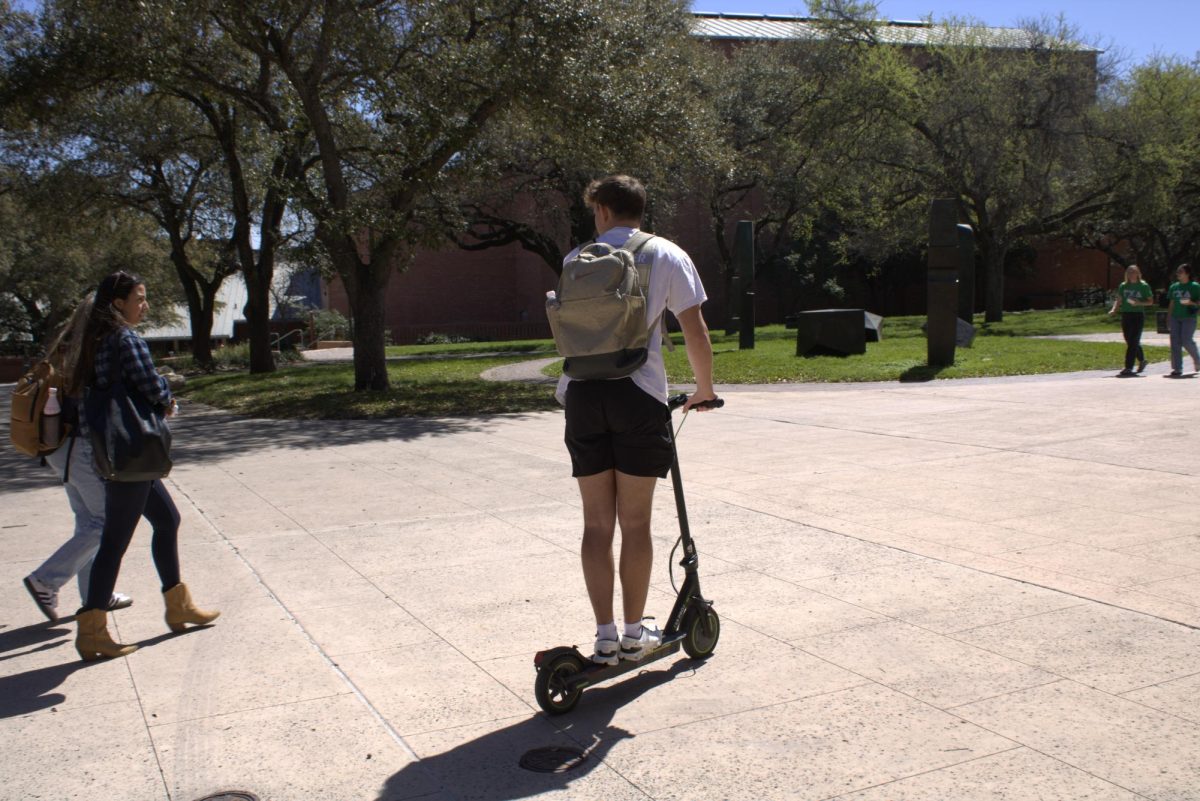It’s no secret that Trinity excels in sports. Last year alone, Trinity athletics captured 15 out of 19 Southern Collegiate Athletic Championship titles, which gave it a 78.9 percent winning percentage and set a conference record for most championships won in a single season. It also captured the President’s Trophy, a trophy given out by the SCAC every year to the team with the highest winning percentage, for the 13th year since it joined the conference in 1991.
Winning, as well as athletics in general, has been a part of the school’s culture dating back to the 1900s, when records of football, basketball, track and tennis teams can be accounted for in early Mirage yearbooks. Specifically, the 1914 yearbook mentions the success of multiple teams in part to the physical director at the time, Edward A. Werner.
“With the football team, he achieved marked success and built up a machine that was only defeated twice during the last season, the best record we can boast of since his former service here. He organized a basketball team and persuaded those in power to consider it as a major sport, thus obtaining for it the permission to give our team a trip. His baseball team is showing up well and is threatening to rival its last year’s brilliant showing.”
Unlike many schools in the early 1900s, Trinity had several women’s sports teams. Records of women’s basketball and tennis teams can be found in 1913. They were not nearly as prominent as men’s teams, but they still had a role on the campus. The passing of Title IV in 1972 brought even more sports to campus.
Women even had their own conference, the Association for Intercollegiate Athletics for Women, until 1980, when the NCAA began to administer women’s athletics.
Even with its many sports teams, Trinity didn’t begin to gain popularity as an athletic powerhouse until the late 1950s when it started to become known for the tennis program.
“I came to Trinity in 1961 because of Coach Clarence Mabry, who was my coach from the first day I picked up a tennis racket and because of the reputation Trinity had in the tennis world. Many players were attracted to playing here,” said Butch Newman, “˜65 graduate, Director of Tennis and tennis coach from 1986-2009. “The best part was when I got here in 1961, Chuck McKinley, a former Trinity graduate, was the runner-up at Wimbledon. He then went on to win the Wimbledon Men’s Singles Championship two years later.”
Several other Trinity graduates made their mark on the professional tennis scene as well as the teams themselves making it to the NCAA championships during their time at the university. The 1972 team even won the national championship as well as the 1970, 1971, 1977 and 1979 teams being the national runner-ups.
“So much of the school history is clearly rooted in the unbelievable tennis teams. People still talk to me about those players to this day,” said President Dennis Ahlburg. “I was a kid when they were playing mostly Australian players in Australia. I heard all of their names my whole childhood – Chuck, Frank Froehling, Dick Stockton and the rest of them. It was a blast when I was able to meet some of them.”
Tennis continued to remain a powerhouse until a restructuring of the athletic system in the early 90s transitioned the program from Division I to Division III. All other sports teams had been transitioned from Division I to Division III in the 70s.
Newman can remember students sleeping on the upper courts near Murchison Hall for three weeks in protest of the decision to move divisions.
Because of the move, athletic scholarships could no longer be offered to tennis players.
“We had a great team when they made the decision to transition into Division III but our players had to make a decision if they wanted to continue playing here,” Newman said. “They had three options: 1) They could stay here and play Division III tennis but give up their scholarship, 2) Stay here and keep scholarship but no longer play tennis or 3) Transfer to any other school and be immediately eligible to play.”
Because the school was no longer allowed to give out athletic scholarships, more money was made available for other sports.
“All of the money going into athletics went to tennis and nothing else. It was embarrassing how bad our other teams were doing,” said Julie Jenkins, head volleyball coach and associate athletic director. “We had no money to recruit good players for all the other teams.”
The change of tennis from DI to DIII was also as a result of the image change the president at the time, Ron Calgaard, and board members wanted to instill.
“Everyone called Trinity the country club school when I came here in 1985. It was full of elite students from well to do families with just decent academics,” Jenkins said. “President Calgaard wanted to raise admission standards to better our reputation. He decided the school was not going to make exceptions for athletes like they had been doing. This whole restructuring changed the national image of Trinity.”
As part of the new change, Trinity joined the Southern Collegiate Athletic Conference in 1991 after being independent for eight years prior.
Joining the SCAC gave Trinity’s athletic teams the opportunity for automatic playoff bids by winning conference, which they could not do as independent teams. It also gave Trinity the motivation to upgrade their facilities.
“There was an enormous amount of change that went on during these years. Not only did we get into a conference and hire full-time coaches but they upgraded the facilities as well. The gym went through a renovation and they did a whole outdoor expansion. The area that now has the softball, soccer and intramural field used to be all homes that they slowly bought up and demolished over a five-year period,” Jenkins said.
By upgrading the athletic program in several aspects, not only has the caliber of teams increased, but the number as well.
“We set out to develop on all-sports program where men and women, golf and football were all treated equally,” said Bob King, athletic director. “Since I’ve been here in 1993, we started some new sports such as women’s golf, and have seen dramatic increases in roster sizes for football, men’s soccer, baseball, cross country, swimming and diving, softball and track and field. The number of athletes has increased as well from 200 to 485 in the last 10 years.” (Check back in on Jan. 31 for the second installment.)




